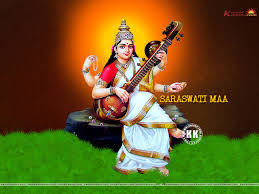VEDANTA FOR BEGINNERS -1.14 & 15. SWAMI SIVANANDA
Friday, June 19, 2020.
1. Introduction - 14 & 15.
14. Sheaths Of The Body & 15.Samadhi :
--------------------------------------------------------------------------------------------------------.
14. Sheaths Of The Body :
Five sheaths are covering the individual soul. They are the Annamaya, Pranamaya,
Manomaya, Vijnanamaya and Anandamaya Kosas. The Antahkarana or the internal organ takes
four forms, viz., mind, intellect, ego and subconscious mind (Chitta).
Ahamkara or the ego has connection with the intellect (Buddhi). Their abode is the
Vijnanamaya Kosa. Mind (Manas) has connection with the Chitta. Their abode is the Manomaya
Kosa.
The light of Surya (sun) brightens the intellect. The heat of Surya gives heat to Prana and
thus maintains the heat of the body.
Just as the mind is the dividing wall between the soul and the Prana, so also Prana (vital air,
energy) is the boundary-wall between the mind and the body.
Above the mind is the Buddhi. The Buddhi or intellect is made up of Agni-Tattva
(fire-principle). Below the mind is Prana which is also made up of fire. Between fire (intellect
above) and fire (Prana below) is the mind (water). The presiding deity of the mind is moon
(Chandra). Dry up this mind (water) through the fire of Vichara (intellect), or the fire of Prana
(Pranayama), or both. You will attain eternal peace, everlasting bliss.
------------------------------------------------------------------------------------------------------
15.Samadhi
Samadhi is the Turiya or the Fourth State which is Pure Consciousness or the Supreme
Absolute where even a tinge of dual consciousness does not exist.
Raja Yogis practise Nirodha-Samadhi. Jnana Yogis or Vedantins practise Badha-Samadhi.
In the practice of Nirodha-Samadhi the Raja Yogi stops all the Vrittis of the mind by concentrating
on one form. In the practice of Badha-Samadhi the Jnana Yogi abandons all names and forms and
takes up the one essence viz., Sat-Chit-Ananda Brahman that is the substratum for all these names
and forms. There is Vyapakata in the Sadhana of a Jnana Yogi. He does Sadhana even while
walking. Wherever he sees he tries to see the one underlying essence and rejects the names and
forms. He is in Sahaja-Samadhi even while moving. But, a Raja Yogi sits and meditates. He is in
need of a steady, definite pose. He cannot be in Samadhi while walking or moving.
In Vedanta, meditation is termed as Nididhyasana. Nididhyasana leads to Sakshatkara or
Nirvikalpa Samadhi. One who has experienced Nirvikalpa Samadhi will not return to the state of
embodiment once again.
-------------------------------------------------------------------------------------------------
NEXT - 16.Method Of Vedantic Sadhana
To be continued ..
===================================================================





.jpg)
Comments